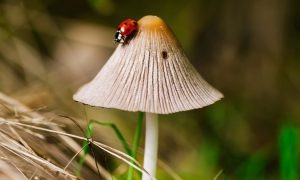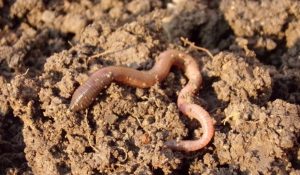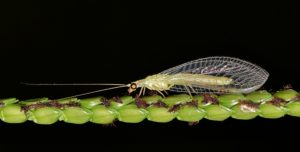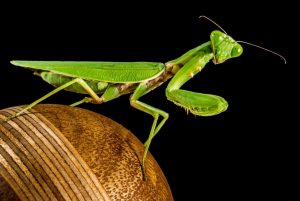Earthworms
In many soils, earthworms play a major role in the conversion of large pieces of organic matter into rich humus, thus improving soil fertility. This is achieved by the worm’s actions of pulling below the surface deposited organic matter such as leaf fall or manure, either for food or to plug its burrow. Once in the burrow, the worm will shred the leaf, partially digest it and mingle it with the earth. Worm casts (see bottom right) can contain 40 percent more humus than the top 9″ (23 cm) of soil in which the worm is living.
Green Lacewings
While depending on species and environmental conditions, some green lacewings will eat only about 150 prey items in their entire life, in other cases 100 aphids will be eaten in a single week.
Ladybug
Google 3D here (new window)
Many coccinellids lay their eggs directly in aphid and scale insect colonies in order to ensure their larvae have an immediate food source.
Nematodes
About 90% of nematodes reside in the top 15 cm (6″) of soil. Nematodes do not decompose organic matter, but, instead, are parasitic and free-living organisms that feed on living material. Nematodes can effectively regulate bacterial population and community composition—they may eat up to 5,000 bacteria per minute. Also, nematodes can play an important role in the nitrogen cycle by way of nitrogen mineralization.
Pillbugs
While they may not be harmful to Cannabis. Pill bugs contribute to their ecosystem as decomposers . They are capable of taking in heavy metals such as copper, zinc, lead and cadmium and crystallize these into spherical deposits in theie midgut. In this way, they temporarily remove many of the toxic metal ions from the soil, although the toxic metals are returned to the soil when they die. They also provide a food source for birds, toads, spiders, wasps, and centipedes.
Praying Mantis
Google 3D here (new window)
Mantises are generalist predators of arthrpods. The majority of mantises are ambush predators that only feed upon live prey within their reach. They either camouflage themselves and remain stationary, waiting for prey to approach, or stalk their prey with slow, stealthy movements. Larger mantises sometimes eat smaller individuals of their own species, as well as small vertebrates such as lizards, frogs, fish, and particularly small birds.
Wikipedia Highlight Info related to plant benefits above.




